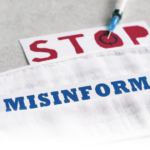- Replicative stage: During the first several days of infection, viral replication triggers an innate immune response. For most patients, this phase is associated with mild respiratory symptoms; in some patients, there is a direct cytopathic effect to the pneumocytes or cardiac muscle, which leads to acute respiratory distress syndrome (ARDS) or myocarditis, respectively (http://doi.org/10.1038/s41569-020-0360-5).
- Adaptive immunity stage: During this stage, viral titers are suppressed by an adaptive immune response. This stage may be associated with cytokine storm, leading to features of sepsis or hematophagocytic lymphohistiocytosis.
The initial report from Wuhan, China, may give us an idea of what to expect as COVID-19 increases in prevalence. Patients with co-morbid conditions, such as hypertension, diabetes and coronary artery disease, were most likely to require admission. Of the 191 patients admitted to Jinyintan Hospital and Wuhan Hospital, 28% died; risk factors for death included older age, evidence of sepsis and a D-dimer greater than 1 μg/mL.
As the country with the highest number of identified cases in Europe, Italy’s experience with COVID-19 may provide us with some insight into how this virus may eventually affect the U.S. The Italian experience with COVID-19 is more than sobering. Yascha Mounk, PhD, an associate professor of practice at Johns Hopkins University’s School of Advanced International Studies, describes the recommendations of the Italian College of Anesthesia, Analgesia, Resuscitation, and Intensive Care (SIAARTI) as follows:
“There are now simply too many patients for each one of them to receive adequate care. … [The guidelines] begin by likening the moral choices facing Italian doctors to the forms of wartime triage that are required in the field of “catastrophe medicine.” Instead of providing intensive care to all patients who need it, its authors suggest, it may become necessary to follow ‘the most widely shared criteria regarding distributive justice and the appropriate allocation of limited health resources.’ The principle they settle upon is utilitarian. ‘Informed by the principle of maximizing benefits for the largest number,’ they suggest that ‘the allocation criteria need to guarantee that those patients with the highest chance of therapeutic success will retain access to intensive care.’”
The SIAARTI guidelines, which were written by Italian clinicians who are actively dealing with the COVID-19-infected patients, specifically recommend we take into account the limitations of local resources when deciding how to allocate healthcare resources. They note that clinicians may need to allocate intensive care unit beds to younger, healthier patients. This is very different from the first come, first served system of allocation that most of our hospitals use. To be blunt, the guidelines imply that instead of focusing our resources on the sickest patients, we may need to focus on the patients who are most likely to survive.


